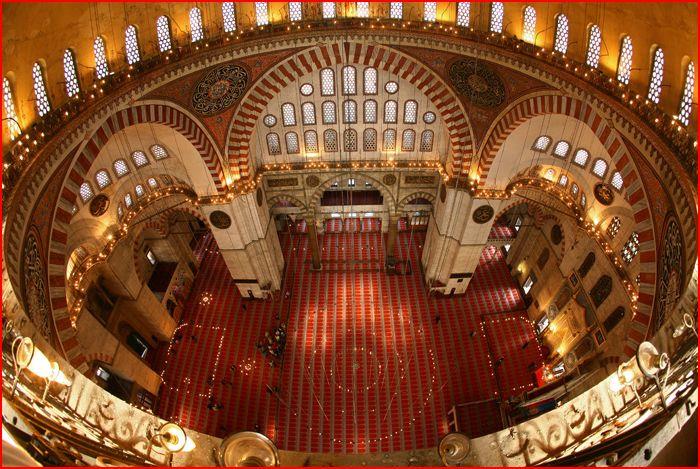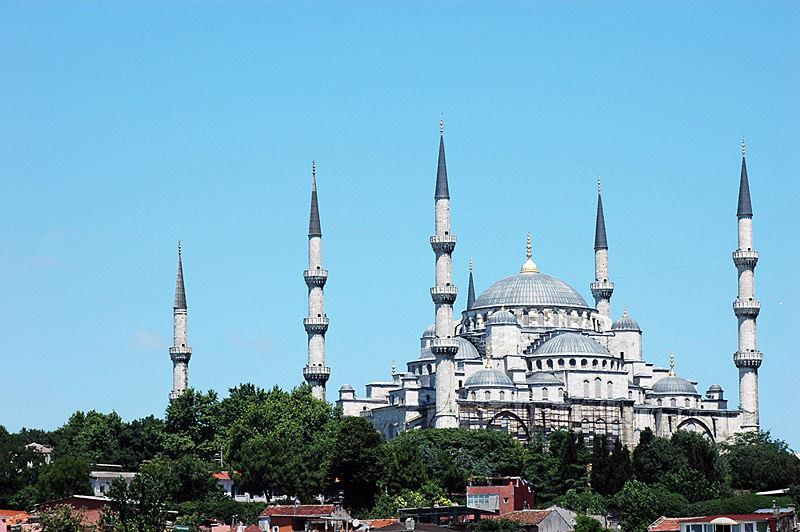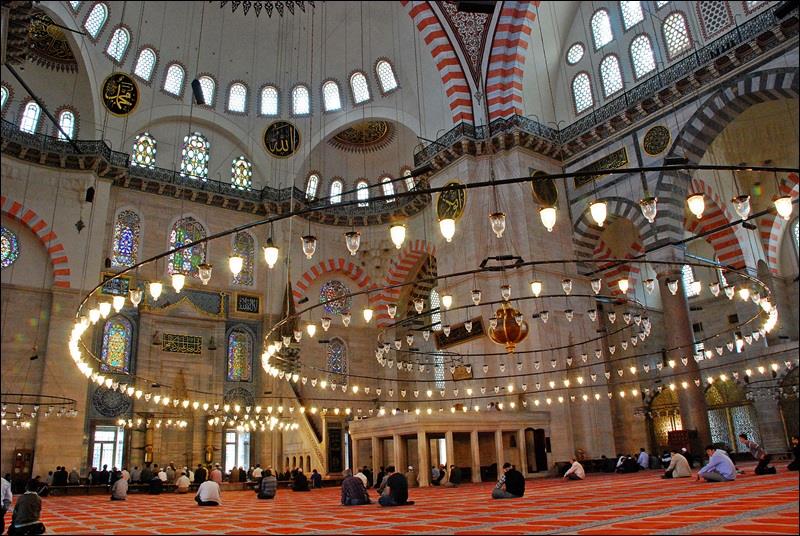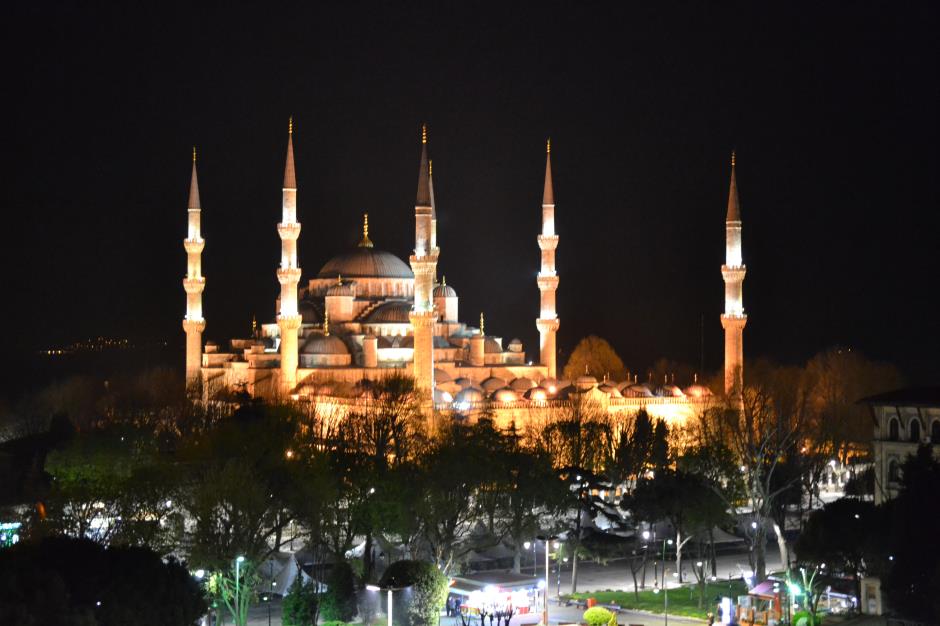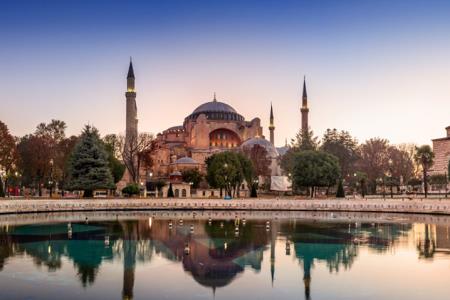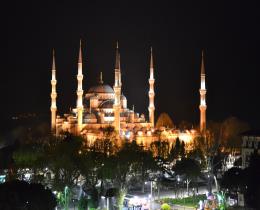Suleymaniye Mosque (Süleymaniye Camii)
Suleymaniye Mosque (Süleymaniye Camii)
The Süleymaniye Mosque (Turkish: Süleymaniye Camii, Turkish pronunciation: [sylejˈmaːnije]) is an Ottoman imperial mosque located on the Third Hill of Istanbul, Turkey. It is the largest mosque in the city, and one of the best-known sights of Istanbul.
The Süleymaniye Mosque, built on the order of Sultan Süleyman (Süleyman the Magnificent), "was fortunate to be able to draw on the talents of the architectural genius of Mimar Sinan" (481 Traditions and Encounters: Brief Global History). The construction work began in 1550 and the mosque was finished in 1558.
This "vast religious complex called the Süleymaniye...blended Islamic and Byzantine architectural elements. It combines tall, slender minarets with large domed buildings supported by half domes in the style of the Byzantine church Hagia Sophia (which the Ottomans converted into the mosque of Aya Sofya)" (481 Traditions and Encounters: Brief Global History).
The design of the Süleymaniye also plays on Suleyman's self-conscious representation of himself as a 'second Solomon.' It references the Dome of the Rock, which was built on the site of theTemple of Solomon, as well as Justinian's boast upon the completion of the Hagia Sophia: "Solomon, I have surpassed thee!" The Süleymaniye, similar in magnificence to the preceding structures, asserts Suleyman's historical importance. The structure is nevertheless smaller in size than its older archetype, the Hagia Sophia.

Exterior aerial shot of Süleymaniye Mosque, 1903. Brooklyn Museum Archives, Goodyear Archival Collection
The Süleymaniye was ravaged by a fire in 1660 and was restored by Sultan Mehmed IV. Part of the dome collapsed again during the earthquake of 1766. Subsequent repairs damaged what was left of the original decoration of Sinan (recent cleaning has shown that Sinan experimented first with blue, before turning red the dominant color of the dome).
During World War I the courtyard was used as a weapons depot, and when some of the ammunition ignited, the mosque suffered another fire. Not until 1956 was it fully restored again.
The construction of the Halic metro bridge in 2013 has irreparably altered the view of the mosque from north.

 English
English Español
Español Deutsch
Deutsch عربي
عربي  Русский
Русский

